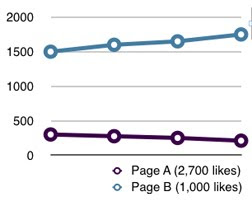 According to new study released by Silicon Valley Bank (SVB), U.S.-based private and venture capital-backed tech companies are more optimistic in their near-term outlooks. More than 83 percent said they will be hiring this year, which is up 10 percent from last year.
According to new study released by Silicon Valley Bank (SVB), U.S.-based private and venture capital-backed tech companies are more optimistic in their near-term outlooks. More than 83 percent said they will be hiring this year, which is up 10 percent from last year. The study focuses on a survey of 375 executives (80 percent at the C-level) of U.S.-based, early-stage companies in four high technology sectors: software/Internet (206 companies), hardware (63 companies), life sciences (83 companies), and clean tech (23 companies). The survey was conducted by a third-party market research firm, Koski Research, in February.
Key Findings From The Startup Outlook 2011.
• Nearly one in four companies (23 percent) exceeded their 2010 revenue targets, up significantly from 2009 (15 percent).
• Two in three executives say that business conditions in 2010 were better than they were the previous year, and three in four expect they will get even better in the coming 12 months.
• The vast majority of surveyed companies (83 percent) plan to hire in the coming year, up from 73 percent a year ago.
• 65 percent of respondents say business expansion and new markets are a top priority for them in 2011.
• The life science sector is more cautious in its outlook, citing regulatory/political issues as its primary challenges. Across all sectors, regulatory/political issues ranked as the third biggest challenge faced by startups.
• The top two concerns are the uncertainty created by our regulatory environment and the overall negative impact this environment is having on risk taking.
While the outlook is positive, government is slowing the recovery.
In order, the biggest challenges faced by these companies included equity financing, scaling operations for growth, and regulatory/political environment. While equity financing topped the list, the cause is also tied to government.
According to survey respondents, venture capital fundraising and investment levels are hindered by a tone set by the administration. While government claims that innovation is the key to success, it has also maintained a tone that suggests an aversion to risk. Unfortunately, innovation and risk go hand in hand.
"Probably my biggest concern (after equity financing) vis-a-vis operating as a startup in the U.S. is the stifling regulatory/tax environment here," said one survey respondent. "The sheer number of regulations and tax issues that have to be dealt with are staggering and the corporate (and related) taxes are highly punitive relative to other developed countries."
 According to several respondents, the environment created by the government is driving more companies to move operations overseas. Along with regulatory issues, respondents said that they tend to hire slowly, given the high cost of compensation packages and the high cost of living in the U.S., along with the scarcity of qualified tech employees.
According to several respondents, the environment created by the government is driving more companies to move operations overseas. Along with regulatory issues, respondents said that they tend to hire slowly, given the high cost of compensation packages and the high cost of living in the U.S., along with the scarcity of qualified tech employees. That doesn't mean executives are not bullish on America. On the contrary, only 13 percent would recommend their peers look elsewhere to start a company. The primary reason for their sentiment, respondents said, is because of the country's entrepreneurial spirit. In order to move beyond current challenges, SVB says the U.S. needs to adopt a more entrepreneurial environment.
Innovation remains the key in helping turn the U.S. economy around.
Among the suggestions included in its policy perspective, SVB suggests that the government promote risk taking and reward successes that result from it, remain open to disruptive innovation (even if it turns older companies upside down), provide a stable, predictable legal and business environment (without the back and forth of sweeping policy changes), and avoid excessive regulation. In addition, the government needs to reform education to ensure the country remains competitive in providing a strong pipeline of talent or allowing more qualified immigrants to bring their skills to America.
Other suggestions included government-sponsored R&D, tax credits for R&D, maintaining a sound system for protecting intellectual property rights, promote the flow of adequate risk capital into startups, and remove subsidies, regulations, and other market-distorting forces that favor incumbents.
These changes are critical for tech companies to help increase the speed of economic recovery, the study suggests. Otherwise, the U.S. will continue to discourage venture money, driving more technology away to India and China. The full report can be found here. It includes insights specific to each sector.













































